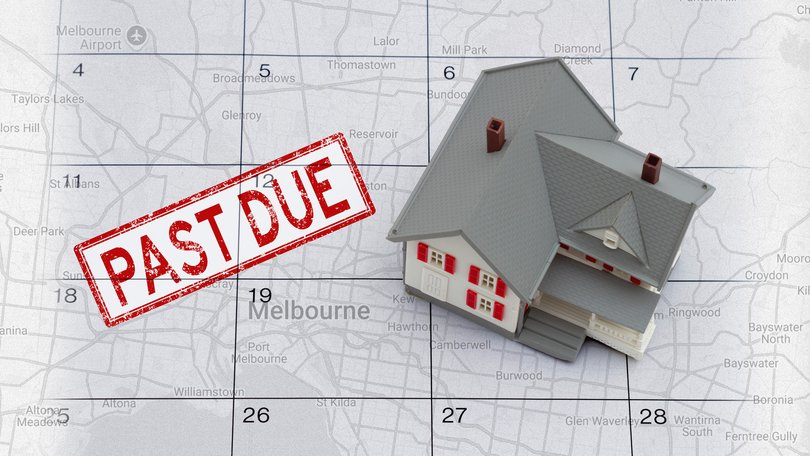Moody’s: New data shows why Melbourne is Australia’s mortgage arrears capital

Melbourne is Australia’s mortgage arrears capital thanks to higher unemployment and a weaker housing market, new data shows.
Credit ratings agency Moody’s has revealed Melbourne’s west has a particularly high mortgage delinquency rate, with 2.45 per cent of borrowers at least 30 days or more behind on their repayments.
Melbourne’s north-west was also in a bad state, with 2.34 per cent of borrowers struggling to pay off their home loan, figures released today showed.
Sign up to The Nightly's newsletters.
Get the first look at the digital newspaper, curated daily stories and breaking headlines delivered to your inbox.
By continuing you agree to our Terms and Privacy Policy.This is well above the national average of 1.45 per cent, and significantly above the levels of thriving housing markets like Perth, Adelaide and Brisbane.
Of Australia’s 10 worst regions for mortgage delinquencies, five were in Victoria in May 2025.
Moody’s Ratings associate vice president Si Chen, a credit analyst, said Victoria’s higher unemployment rate of 4.7 per cent meant more borrowers in some outer suburbs of Melbourne were struggling to service their mortgage.
“Victoria just has a markedly higher unemployment rate compared to the rest of Australia, so you would naturally see mortgage delinquencies a little bit higher,” he told The Nightly.
“Maybe the people in western Melbourne, they might not all have mortgages but on an economic perspective, there’s definitely a lot of pressure on housing prices and with difficulties of selling.
“If your region is not doing well, then you might fall into longer delinquencies.”
From November, new rules are coming into effect in Victoria giving renters 90 days’ notice of rent increases and banning rent bidding, in a state that already has investor taxes to pay for COVID lockdowns.
Moody’s is expecting those rules to dampen investor demand in Melbourne.
”Additionally, there has been a net interstate outflow of people from Victoria over recent years, and while there has been a large net inflow of people from overseas, many international migrants are students and are not in the market to purchase property,” it said.
“This creates less demand for homes and contributes to the stagnation of home prices.”
The story was very different in Australia’s thriving housing markets, with just 0.71 per cent behind on their mortgage in Brisbane’s south, compared with 0.72 per cent in Adelaide’s west, 0.73 per cent in inner Perth and 0.78 per cent on Sydney’s north shore.
Melbourne’s property market is also weaker than other major cities with house prices growing by just 2.1 per cent in the year to September, Cotality data showed, which was well below the 3.4 per cent increase in wages.
By comparison, house prices in Brisbane have been growing by an annual pace of 7.3 per cent, compared with 6.4 per cent in Adelaide and 6.3 per cent in Perth.
“If your house is performing well, it’s appreciating in value, you’re pretty keen to get on top of your mortgage, potentially get ahead of it especially in the lowering interest rate environment,” Mr Chen said.
Australia’s national unemployment rate last month rose to a four-year high of 4.5 per cent, surprising financial markets.
Traders on the futures market now regard a Melbourne Cup day rate cut from the Reserve Bank of Australia, on November 4, as a 74 per cent chance, with more rate cuts expected to bring down mortgage arrears.
“That would obviously mean a stronger performance for mortgages,” Mr Chen said.
The RBA’s three rate cuts in February, May and August have taken the cash rate down to 3.6 per cent and helped reduce overall mortgage arrears rates across Australia, when May 2024 was compared with May this year.

